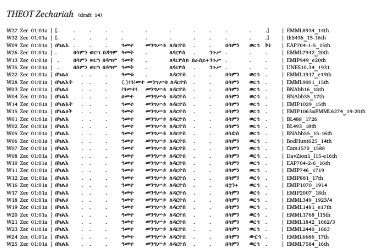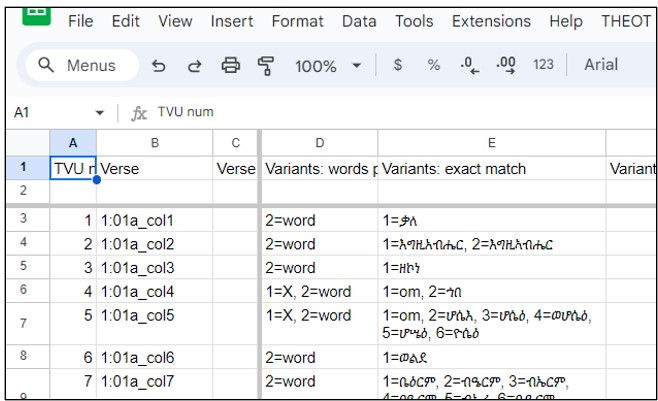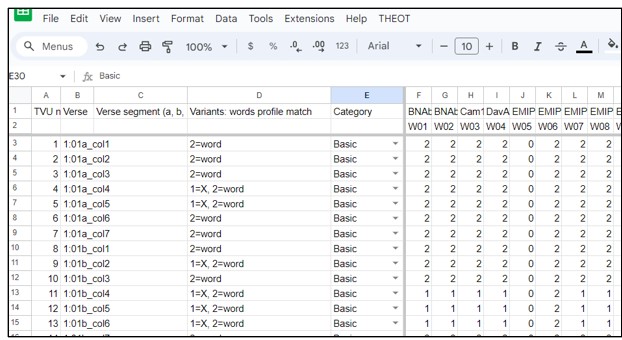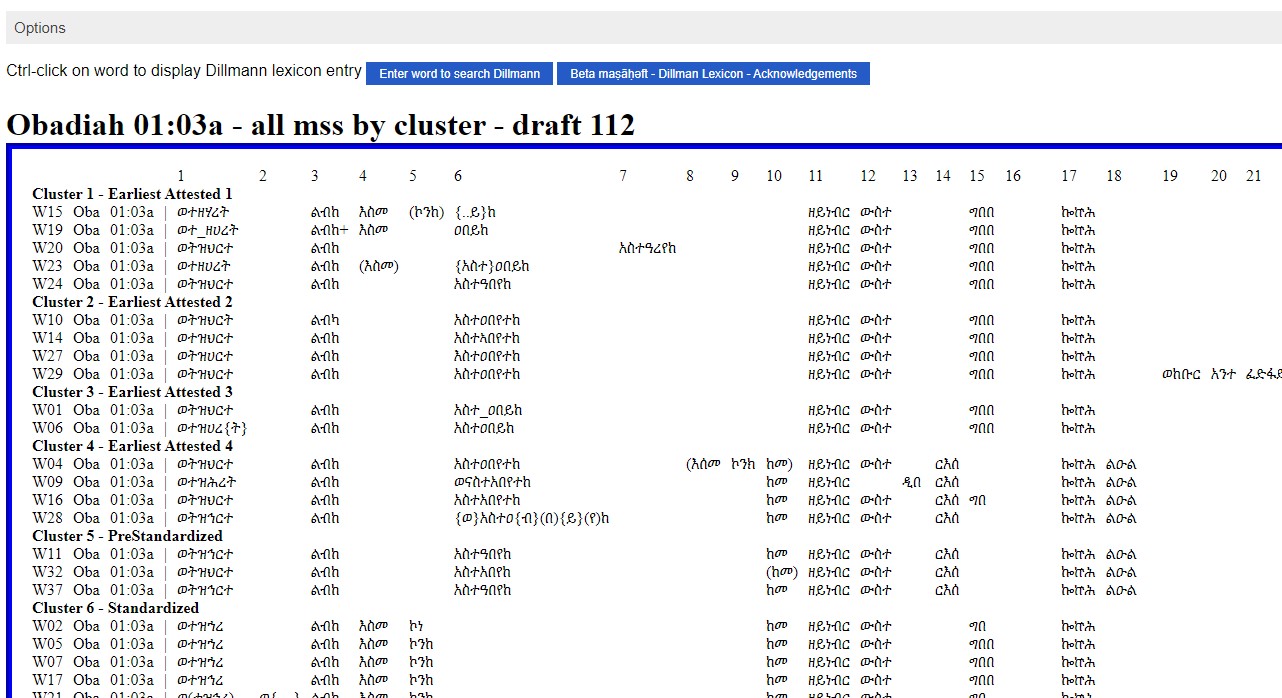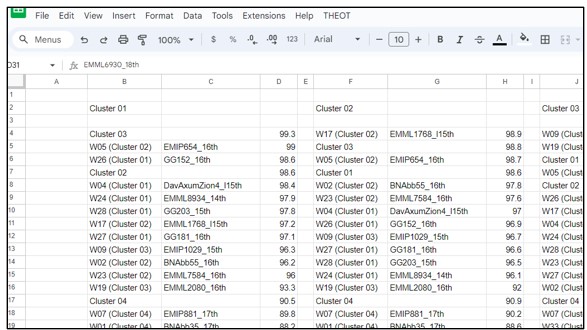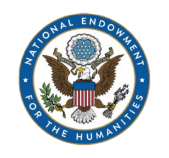Materials for the
Study of Ethiopic
Zechariah
We...
Turn text into numbers.
Identify patterns in the numbers.
Turn numbers into stories.
Ethiopic Zechariah
Stuffs1-goes-here
Aligned
Texts
Texts
The PDF is a copy of the document file in which we aligned all the words of all the manuscripts in this study. Click the image on the left to download the pdf file. Click the image on the right to see a video explaining how this data was produced or processed.
Variants
The spreadsheet shows the data produced by the THEOT script labeled “create database of variants”. Click the image on the left to open a copy of the spreadsheet. Click the image on the right to see a video explaining how this data was produced or processed.
Words
Profile
Match
Profile
Match
The spreadsheet shows the data produced by the THEOT script labeled “process database of variants”. Click the image on the left to open a copy of the spreadsheet. Click the image on the right to see a video explaining how this data was produced or processed.
Dendrogram
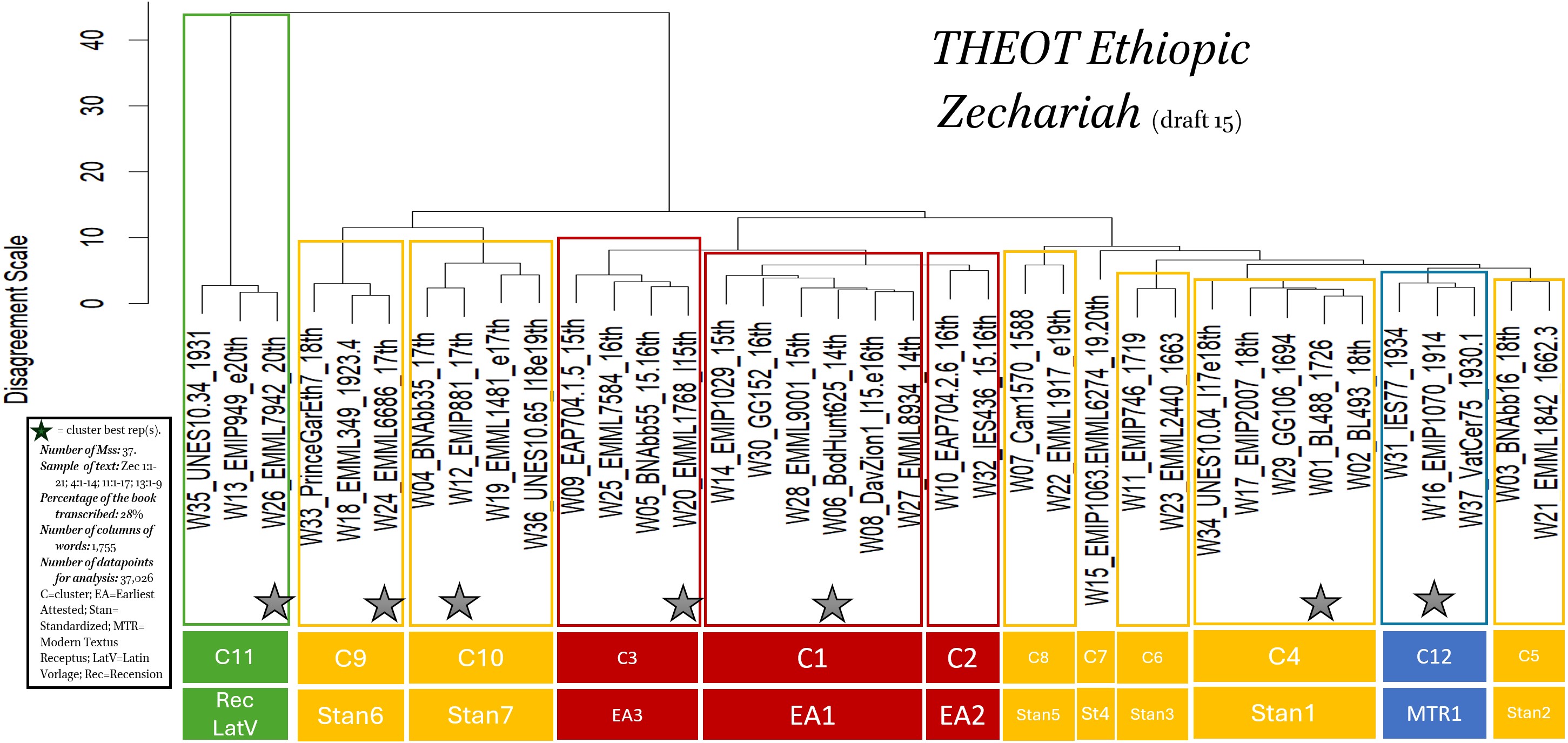
The jpeg shows the Dendrogram produced by feeding the R file and a CSV (comma separated values) file into the R program to generate a dendrogram. The colored boxes and stars represent our interpretation of the dendrogram, and become our working hypothesis for investigation of the book. Click the image on the left the dendrogram. Click the image on the right to see a video on THEOT Dendrograms and How to Use them.
THEOT
Text
Viewer
Text
Viewer
These links explore the THEOT Text Viewer and How to Use It. Click the image on the left to open the website directly. Click the image on the right to see a video introducing the Text Viewer and How to Use it.
Best
Representative
Manuscripts
Representative
Manuscripts
The spreadsheet shows a series of tabs that represent the various stages of processing the data with a view of identifying the best representative manuscript for each cluster. Click the image on the left to open a copy of the spreadsheet. Click the image on the right to see a video explaining how this data was produced or processed.
Zechariah: Sample, Best Representatives, Minor Recensions, Other Studies
- Sample of the Text: Zec 1:1-21; 4:1-14; 11:1-17; 13:1-9.
- Sample Size: 27.9% of the book.
- Sample of Manuscripts: 37. BL OR 488 (1726), BL OR 493 (17th), BN Abb 16 (19th), BN Abb 35 (17th), BN Abb 55 (15-16th), Bodleian Huntington 625 (Aeth d. 12, 14th), EAP704/1/5 (C1-IV-14 = DA-005, 15th), EAP704/2/6 (C1-IV-291 = MK-006, 15th), Cambridge Add. 1570 (1588/9), Davies Axum Church of Zion (l15th), EMIP 0746 (Chelekot Selasse 5, e19th), EMIP 0881 (Chelekot Selasse 142, 17th), EMIP 0949 (Mekele Mikael 172, 20th), EMIP 1029 (Mihur Gedam 54, 15-16th), EMIP 1063 (Addis Alem 21, 1889-1913), EMIP 1070 (1914), EMIP 2007 (Tweed 58, 18th), EMML 0349 (1924), EMML 1481 (e17th), EMML 1768 (l15th), EMML 1842 (1662/3), EMML 1917 (19th), EMML 2440 (1663), EMML 6686 (17th), EMML 7584 (16th), EMML 7942 (20th), EMML 8934 (14th), EMML 9001 (e15th), Gunda Gunde 106 (1682-1706), Gunda Gunde 152 (C3-IV-3, (16th), IES 77 (1934), IES 436 (15-16th), Princeton Garrett Ethiopic 7 (17th), UNESCO 10.04 (1679), UNESCO 10.34 (1931), UNESCO 10.65 (18-19th), Vat Cerulli 75 (1931).
- Number of Data Points Generated: 64,935.
- Earliest Attested 1 Best Representative – Bod Hunt 625 (14th).
- Earliest Attested 3 Best Representative – EMML 1768 (l15th).
- Standardized 1 Best Representative – BL 488 (1726).
- Standardized 6 Best Representative – EMML 6686 (17th).
- Standardized 7 Best Representative – EMIP 881 (17th).
- Modern Textus Receptus Best Representative – EMIP 1070 (1914).
- Minor Recensions: EMIP 949 (e20th), UNESCO 10.34 (1931), and EMML 7942 (20th) represent a minor recension, translated from the Latin Vulgate, with a 44% degree of difference from the rest of the tradition.
